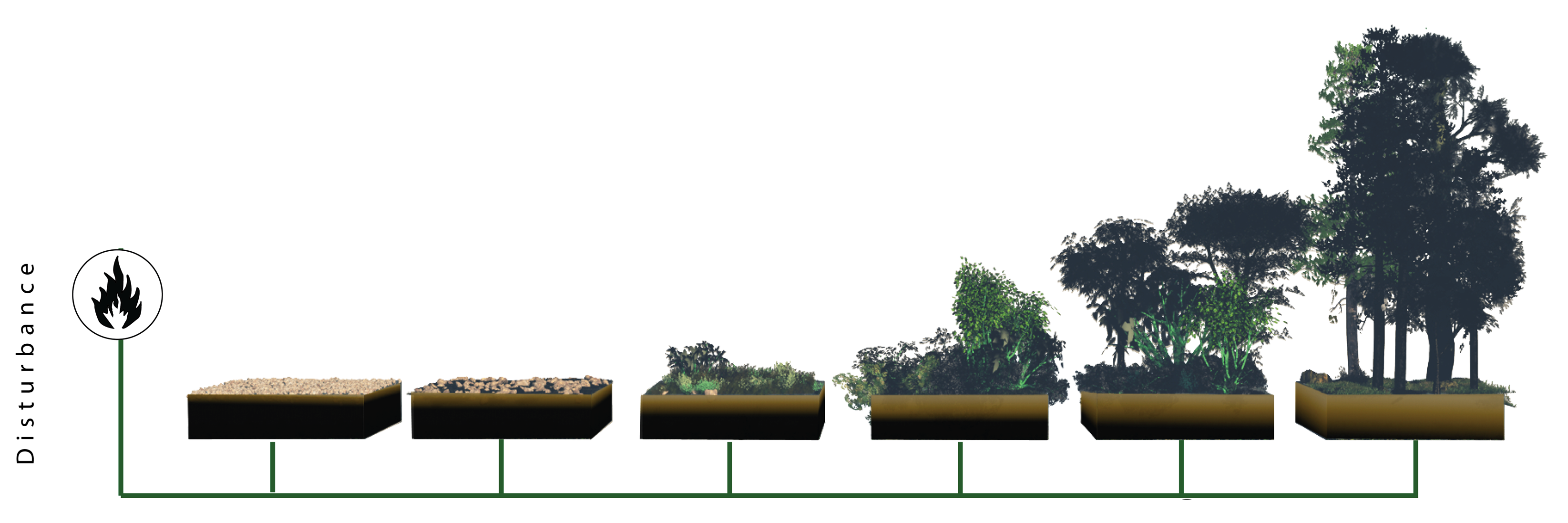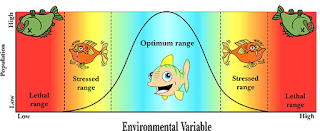Succession
Succession
Ecological succession is a series of progressive changes in the species that make up a community over time. Ecologists usually identify two types of succession, which differ in their starting points:
- In primary succession, newly exposed or newly formed rock is colonized by living things for the first time.
- In secondary succession, an area that was previously occupied by living things is disturbed, then re-colonized following the disturbance.
Succession often involves a progression from communities with lower species diversity—which may be less stable—to communities with higher species diversity—which may be more stable
—though this is not a universal rule.
Primary succession and pioneer species
Primary succession occurs when new land is formed or bare rock is exposed, providing a habitat that can be colonized for the first time.
For example, primary succession may take place following the eruption of volcanoes, such as those on the Big Island of Hawaii. As lava flows into the ocean, new rock is formed. On the Big Island, approximately 32 acres of land are added each year. What happens to this land during primary succession?
First, weathering and other natural forces break down the substrate, rock, enough for the establishment of certain hearty plants and lichens with few soil requirements, known as pioneer species, see image below. These species help to further break down the mineral-rich lava into soil where other, less hardy species can grow and eventually replace the pioneer species. In addition, as these early species grow and die, they add to an ever-growing layer of decomposing organic material and contribute to soil formation.
This process repeats multiple times during succession. At each stage, new species move into an area, often due to changes to the environment made by the preceding species, and may replace their predecessors. At some point, the community may reach a relatively stable state and stop changing in composition. However, it's unclear if there is always—or even usually—a stable endpoint to succession, as we'll discuss later in the article.
Secondary succession
In secondary succession, a previously occupied area is re-colonized following a disturbance that kills much or all of its community.
A classic example of secondary succession occurs in oak and hickory forests cleared by wildfire. Wildfires will burn most vegetation and kill animals unable to flee the area. Their nutrients, however, are returned to the ground in the form of ash. Since a disturbed area already has nutrient-rich soil, it can be recolonized much more quickly than the bare rock of primary succession.
Before a fire, the vegetation of an oak and hickory forest would have been dominated by tall trees. Their height would have helped them acquire solar energy, while also shading the ground and other low-lying species. After the fire, however, these trees do not spring right back up. Instead, the first plants to grow back are usually annual plants—plants that live a single year—followed within a few years by quickly growing and spreading grasses. The early colonizers can be classified as pioneer species, as they are in primary succession.
Over many years, due at least in part to changes in the environment caused by the growth of grasses and other species, shrubs will emerge, followed by small pine, oak, and hickory trees. Eventually, barring further disturbances, the oak and hickory trees will become dominant and form a dense canopy, returning the community to its original state—its pre-fire composition. This process of succession takes about 150 years.





good job is, its so simple but its very clearly
BalasHapusi like this post. and it's a nice blog. it looks so fresh
BalasHapus